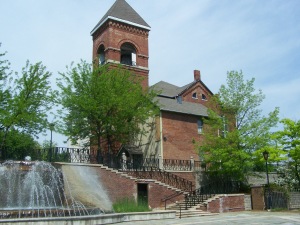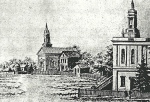Tour A 1. Bethel AME Church
Bethel AME Church, founded in 1836, is the oldest African American Church in Indianapolis and the second oldest in Indiana. From the earliest days, the congregation has been involved in social justice issues from education, civil rights to social welfare. The original church building was located on Georgia Street during the antebellum era, and burden in July 9, 1864. this church is listed on the National Park Service “Network for Freedom,” for the congregation activities on the Underground Railroad. The congregation was involved in direct assistance of fugitives, promoting civil rights and for prominent leaders in the freedom movement. This building is also listed on the National Register of Historic Places for its connection with Indiana’s rich African American history, including the formation of the Indiana Association of Colored Women’s Club and the Indiana NAACP.
The Church is a participant in the Indiana Freedom Trails, an organization dedicated to “Indiana sites and routes as part of the National Underground Railroad network.”[1] The Bethel AME Church is also listed on the National Park Service Network to Freedom, being one of only three listed properties for the state of Indiana. The Network to Freedom was organized to coordinate research and education on the Underground Railroad, defined as “the effort of enslaved African Americans to gain their freedom by escaping bondage.”[2]
This “Forged through Fire” project employs the Network to Freedom model for “coordinating preservation and education” to “integrate local historical sites, museums, and interpretive programs associated with the Underground Railroad.”[3]
[1] “Indiana Freedom Trails (Indianapolis)–Main Page,” accessed April 3, 2013,
[3] The congregation met in the home of Augustus Turner, then built a small frame church in 1841 on Georgia Street. In 1858 they moved the Christ Church building from Monument Circle to the Gerogia Street site in 1857, only to witness it burned by incendiaries July 7, 1864, for its association with Network to Freedom activities. After the war, the congregation relocated to its current Vermont Street location to find a “safe place” for the congregation. Connections to the Underground Railroad for church resources are evaluated based on the “congregation and the activities the church was involved in.” Since the original building was burned, the National Park Service program suggests that the “current location of a congregation clearly descended from one active in the Underground Railroad may be recognized.” “Network to Freedom Application,” accessed March 29, 2013.

